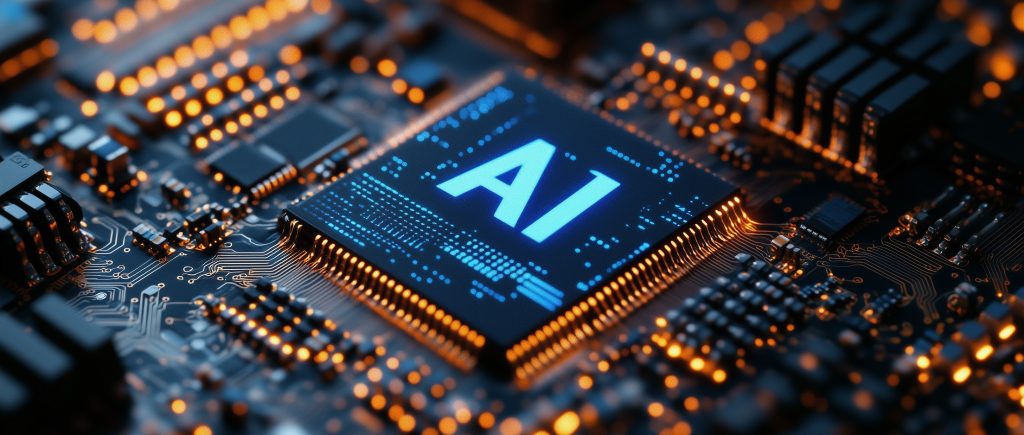The artificial intelligence (AI) sector is witnessing a frenzy following a number of massive deals that promise to reshape the technological landscape, but beneath the excitement and large figures lie questions about sustainability. Recent announcements, including a multi-year chip supply agreement between “OpenAI” and “AMD” valued at tens of billions of dollars, and a potential acquisition by “BlackRock” via “Global Infrastructure Partners” of “Aligned Data Centers” for approximately $40 billion, point to unprecedented investment in AI infrastructure.
These steps come with expectations that global capital expenditure on AI will exceed one trillion dollars in 2025, driven by hyper-scale computing companies like “Microsoft,” “Amazon,” and “Meta” competing to secure computing power. However, this frenzy mirrors historical booms that ended in busts, prompting a closer look at whether the hype matches reality.
The Grand Deal Fever
AI growth spurred a wave of high-stakes transactions in early October 2025. A prominent agreement involves an AI developer like “OpenAI” securing chips from a semiconductor giant like “AMD,” with an option for an equity stake of up to 10%, potentially unlocking tens of billions in revenue. Simultaneously, negotiations for the $40 billion purchase of a major data center operator like “Aligned Data Centers” by “BlackRock” underscore a severe shortage of the power and cooling essential for AI operations. Other deals include cloud commitments, such as those announced by “Oracle” for $2 billion in Germany for cloud and AI infrastructure, and the deployment of AI tools for thousands of vendors, such as in a “Palantir” deal that contributed to its revenues exceeding one billion dollars, enhancing retail efficiency. The third quarter of 2025 also saw huge funding rounds, like $13 billion for “Anthropic” and $5.3 billion for “xAI,” reflecting AI’s dominance in venture investments, totaling $192.7 billion to date.
These agreements build on the momentum of 2025, where AI revenue for leading companies like “Palantir” tripled to $12.7 billion in some sectors. Unlike previous tech surges, AI benefits from over 4 billion mobile phone users. However, reliance on vendor financing—where chip manufacturers like “Nvidia” finance buyers who then purchase their products, as seen in its investments in “OpenAI” and “Anthropic”—creates circular dependencies. This is a situation where the parties to a deal are mutually reliant on each other for financing, which magnifies the risks. These factors increase the risks, as commitments often exceed upfront payments, betting on future profits that may or may not materialize.
Warning Signs Ahead
A number of analysts suggest this surge hides an emerging bubble, 17 times the size of the Dot-com era and four times the subprime mortgage crisis. With capital expenditure exceeding revenue by $800 billion, 95% of companies report zero return on investment (ROI) from their AI investments. Closed-loop, circular systems among tech giants like “Microsoft” and “Google” amplify fragility, recalling the Nasdaq crash in 2000, known as the Dot-com bubble, which saw a sharp decline in tech stock valuations and wiped out 78% of the market value.
Another group of observers believes there is an “industrial bubble” producing lasting innovations, like fiber optics, which survived the Dot-com fall. However, private infrastructure debt, including $29 billion in private vehicles, indicates vulnerability. Hardware shortages may persist for a decade, while tariffs could raise costs further. Government intervention adds layers: sovereign wealth funds continue injecting capital, but without broader regulatory oversight, funding exaggerations loom.
Central bank governors, including Federal Reserve Chair “Jerome Powell,” have noted AI’s potential and its promising role in boosting productivity but warned of economic disruptions if sectoral investments do not achieve their intended goals.
The Potential Impact of AI on the Global Economy
AI is expected to fundamentally transform the global economy, with estimates suggesting its impact could add the equivalent of 2.6 trillion to 4.4 trillion annually to the global economy through increased productivity and improved efficiency in industrial processes. Reports from the International Monetary Fund (IMF) indicate that AI will affect around 40% of global jobs, both by replacing some and complementing others, necessitating stronger social safety nets and investment in worker retraining to ensure the acquisition of required digital skills. However, a significant disparity is evident, as the impact on growth in developed countries is projected to be more than double that in low-income nations, due to the unequal access to critical AI resources such as chips, data, and infrastructure. This disparity threatens to deepen the global digital and economic divide.
AI is expected to radically transform the global economy during 2025 and beyond, with reports showing that private investment in the “United States” rose to 109.1 billion in 2024, boosting economic growth by up to 1.5% by 2035 and 3.7% by 2075, while raising labor productivity by 15% in advanced markets. Nevertheless, a gap emerges between advanced and developing economies, with the growth impact in advanced nations more than double that in low-income countries, and revenues per employee in AI-exposed industries increasing by up to three times. It also encourages the employment of mixed skills combining AI and human capabilities, with no widespread labor market collapse evident so far, though it could lead to disruptions if regulatory and educational gaps are not addressed.
What’s Next?
AI’s transformative power in fields including diagnostics and drug discovery may justify the spending momentum, setting this case apart from purely speculative ones. Deals are expected to continue, such as “Perplexity’s” acquisition of the “Visual Electric” team, but power constraints and declining enterprise usage may trigger corrections of 20-50% in tech stock valuations by 2026.
In any case, investors and traders are advised to exercise reasonable caution, staying fully informed about capital returns and global shifts. Instead of being constantly preoccupied with the hype, they should focus on evidence of real-world impact; while the AI boom holds the promise of societal gains, ignoring the risks opens the door to repeating costly historical lessons. The truly effective test lies in whether innovation transcends speculation, transforming today’s surge into a solid foundation for tomorrow’s investments.

 Noor Trends News, Technical Analysis, Educational Tools and Recommendations
Noor Trends News, Technical Analysis, Educational Tools and Recommendations




